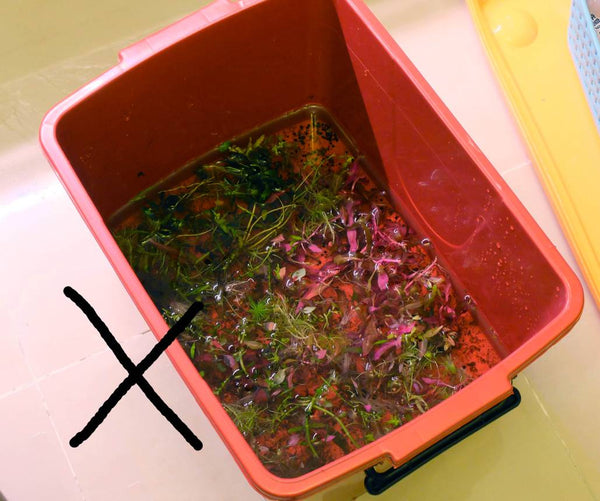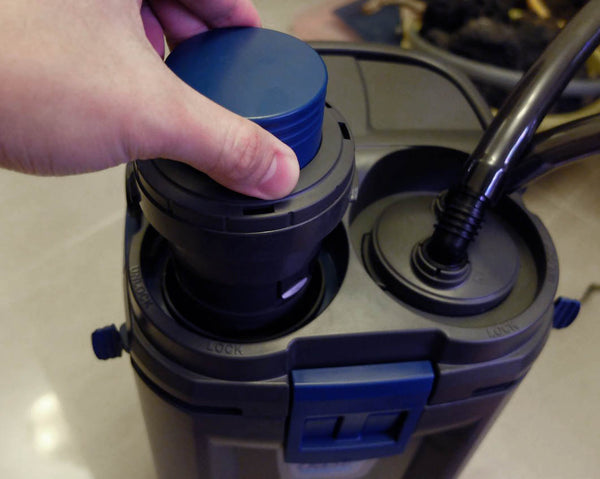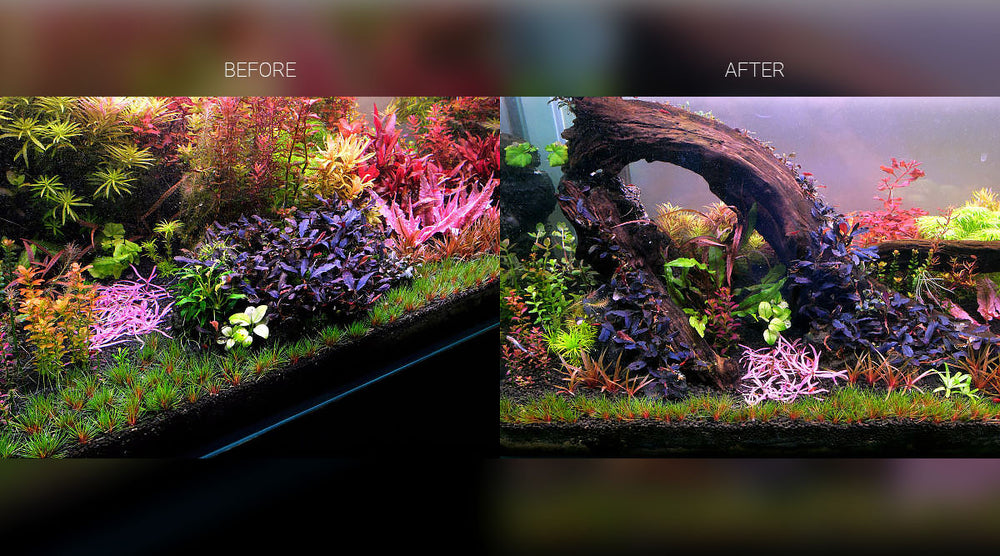Resetting a tank
The first question you need to ask is, does my tank really need a full reset? Often tanks that are over-grown or face deteriorating growth just need substrate maintenance or trimming and replanting work done.
Head here to read about substrate maintenance.
Head here to read about why trimming and replanting of new growth is important.
For many folks, resetting a tank can be a nightmare. A stable matured tank is easy to manage, while fresh setups tend to go through a period of instability; for many folks this has mean algae outbreaks or melting plants, but both these things can be minimized if not completely eliminated if the transition is managed well.
The key advantage of resetting an existing tank compared to running a totally new setup is that you will probably have a matured filter, and a tank of healthy plants adapted to your tap parameters & light system (assuming you are not changing these as well).
Key elements to manage
Plants
If you plan to replant existing plants after the reset, it is imperative to store them in manner that minimizes stress. The wrong way to approach this is by floating a large number of plants in a small bucket. Over-crowding up rooted plants in a small volume of water can lead to mass melting if some plants start deteriorating as everything is in the same media. Without flow and CO2 injection, gaseous exchange is terrible. A much better way is to store the plants loosely in moist bags or in moist newspaper. Then store it in a cool place (16 to 24*C); this slows down both plant and bacteria metabolism. Even the most delicate species will usually last up to a week in this format. Hardy species can survive a couple of weeks. This gives you more time to manage the substrate, cycling and other aspects of the tank. Storing plants in good form plays a huge role in avoiding melting and algae issues – because healthy plants are algae resistant.

Don’t do this; floating uprooted plants in a crowded bucket – if some decay, the whole bunch can melt.
Substrate
If you plan to change the substrate, and replant the tank within the week, remember that you do not have time to fully cycle very ammonia rich substrates such as ADA aquasoil. This means that delicate plants will melt if you use very ammonia rich soils. If you still like a rich substrate like I do, I use a thin layer (0.5cm) of ammonia rich aquasoil at the base, but use leaner aquasoils (such as Tropica) for the rest of the substrate.
If you do not plan on changing 100% of the substrate (old aquasoils can be reused – keep the grains and discard the fine dust), mixing it in with new soil is a great way to kick start the microbial community in the tank. In such scenario, you would not want the aquasoil to dry out completely.
If you are reusing old aquasoil after clearing them buildup organic detritus, enriching with ammonia rich root tabs will also rejuvenate the substrate. Our root tabs, APT Jazz, are designed specifically for this purpose. Having ammoniacial nitrogen available in the substrate greatly boosts plant growth and quality.
For folks that are resetting their tanks because of algae issues – don’t dump/discard your substrate just because you are worried about algae spores being in the soil. Spores are everywhere, you can’t avoid algae by trying to inoculate the tank. You can only avoid algae by creating a tank environment that makes it unfavorable for algae to propagate. You can use algicides to “wipe the slate clean” so to say in the fresh setup before you add in plants/livestock.
Filter
The filter’s microbial colony is invaluable to tank stability (not to mention ammonia cycling). I would suggest not cleaning it at all on the same week/time that you do the tank reset. This prevents any disturbance to the microbial community, which you want to be at its optimal when you restart the tank. Also, there is usually a high amount of debris produced in new setups; it makes sense to service the filter in the second or third week after the reset.

Using filters with a removal pre-filter allows the main chamber to be undisturbed for long periods of time.
Hardscape
If you have hardscape that is badly affected by algae – I would bleach the rocks, then rise them thoroughly. Bleach is quite safe as it washes off easily (as long as you are not using porous rock). Else, if you are paranoid you could use hydrogen peroxide instead, which decomposes harmlessly into water & oxygen over time. Usually I would just brush wood with a hard brush – as it is absorbent, I avoid using harsh chemicals on it.
After the reset; managing the mini-cycle

Freshly submerged soils tend to release some ammonia and volatile organics, this becomes the main trigger for algae and volatile soils can melt delicate plants. For example, Utricularia gramminifolia is a relatively undemanding plant, but many aquarists fail at growing it because it is sensitive to uncycled/raw soil/aquasoils.
Assuming that you have stored the plants correctly as above, you have a few days leeway. If you have switched out the substrate and are using fresh soil/aquasoil, I recommend doing the following: Do not plant immediately, cycle the tank for at least a couple of days – run the filter, but without lights. In the next 2 days, do large water changes ( > 70%) and dose bacteria cultures (if available) after water changes. These water changes are to remove volatile organics and debris.
If you have not used overly ammonia rich aquasoils as a base, ammonia readings should be zero on day 3 due to the use of your matured filter. If not, you can afford to wait another day or 2. You can then replant the plants that you have removed from the tank, and start dosing, running CO2 and lights the next day. This process should minimize the transition stress for plants and mini-cycles / melting can usually be avoided. Similar to new setups, more water changes and removal of decaying old growth helps avoid algae issues as the tank matures. Using less light <60 umols of PAR on substrate in the first couple of weeks for fresh setups is also a smart tweak for folks that persistently get algae.
Head over here to read about tank cycling and biology and why matured tanks face less algae issues.
Head over here to read about how trimming and replanting can help solve algae issues naturally.
